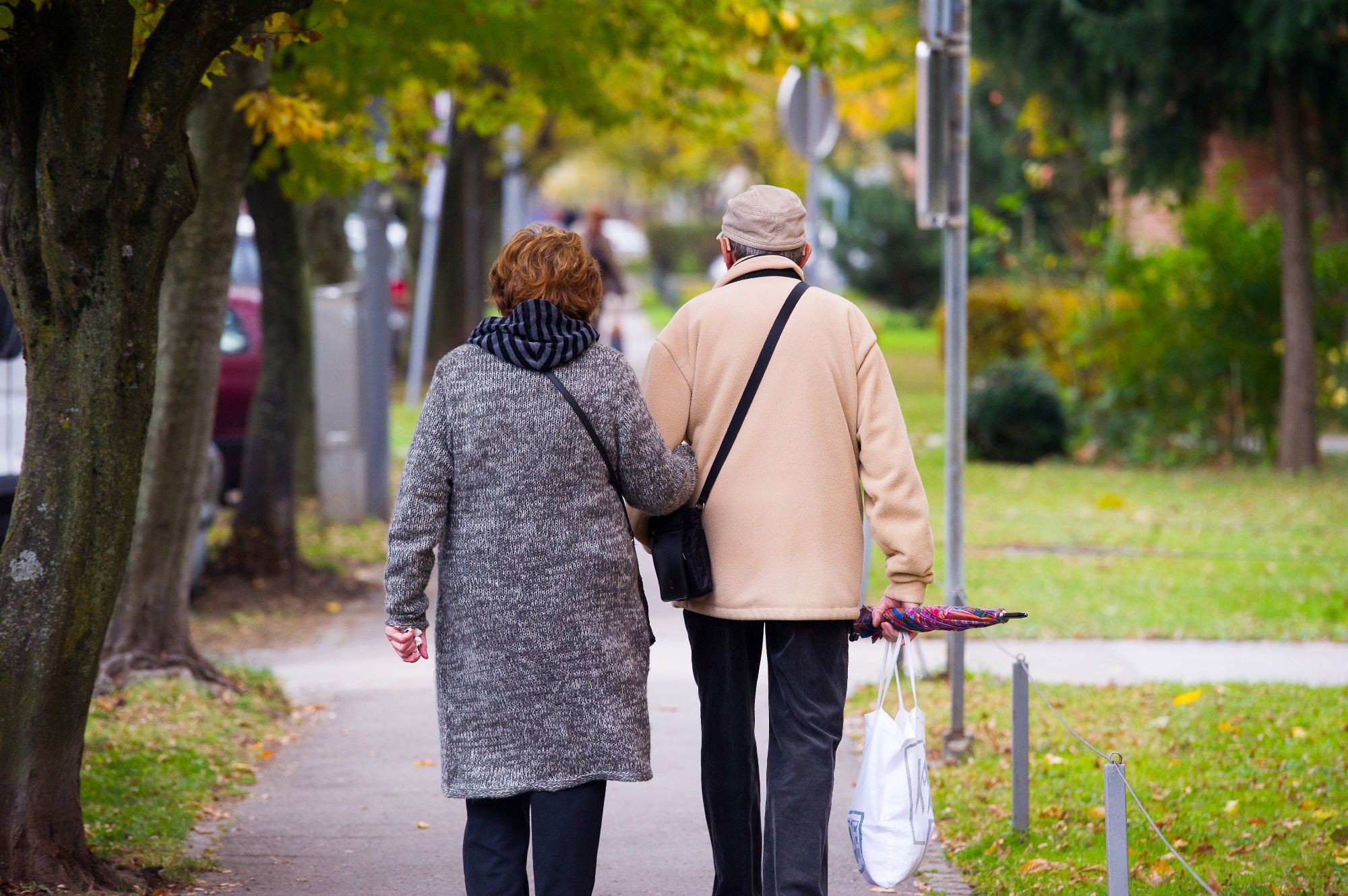In a recent study published in PLOS ONE, researchers investigated whether waist-mounted sensors could evaluate gait parameters reflecting older adults' speed, distance covered, and physical activity (PA).
 Study: Waist—What? Can a single sensor positioned at the waist detect parameters of gait at a speed and distance reflective of older adults’ activity? Image Credit: NejcVesel/Shutterstock.com
Study: Waist—What? Can a single sensor positioned at the waist detect parameters of gait at a speed and distance reflective of older adults’ activity? Image Credit: NejcVesel/Shutterstock.com
Background
Aging is associated with increased cellular and molecular damage, which leads to a loss in physiological reserves and functional capacity over time, increasing disease susceptibility. The functional deterioration linked to lower levels of PA is a concern among the elderly.
Gait characteristics can be ascertained to assess PA levels among older individuals since walking is the preferred form of exercise in the geriatric population.
PA evaluation and the identification of inactive individuals not meeting the minimum requirements for healthy aging can inform policymaking and aid in developing targeted interventions. Sensors enable objective PA measurements that can be monitored by oneself and, therefore, could enhance self-care, increase awareness, and attenuate the risks related to aging.
Although studies have reported that the ankle is the ideal location for installing sensors for gait assessments, the waist region is easier to access for older individuals.
About the study
In the present study, researchers compared step count readings captured by inertial sensors placed at the waist and ankle to those of a criteria step count measure obtained by visual inspection. They also compared gait features based on the data recorded by the sensors.
Accelerometers were placed on the ankle and waist, and step counts were recorded based on a 3.0-minute treadmill walking assessment. In addition, gait parameters such as step count, mean step/stride time, step time variability, and stride asymmetry features were derived for both sensors from the estimated initial and final contact times and compared.
Community-dwelling young (18.0 to 65.0 years of age, n=10) and older (65.0 years of age and above, n=10) adult individuals were recruited via advertisements in local golf clubs, tennis clubs, and physiotherapy departments.
Only individuals who were independently mobile, physically capable of physical activity and mobility tests, without neurological or cognitive deficits or a history of orthopedic surgery or trauma in the previous year were included.
Weight and height measurements were recorded with demographic data. The inertial sensors were placed above the third lumbar vertebra (L3) and bilateral ankles at five cm from the lateral malleolus. The sensors were aligned with the anteroposterior, mediolateral, and vertical axial planes and comprised tri-axial magnetometers, gyroscopes, and accelerometers.
Ankle sensors were secured beneath outer clothing with an elastic tubular bandage and tape, whereas lumbar sensors were secured over outer clothing. Raw accelerometer information from the sensors was captured and stored in the onboard memory, which was saved onto a computer for post-processing and analysis.
For older adults, video recordings were made during the walk tests and observed retrospectively to obtain the criterion measurement of step count among older adults.
Results
Among individuals aged >65 years, the mean age, height, and weight were 69 years, 165 cm, and 72 kg, respectively. The mean values for the corresponding parameters among younger adults were 44 years, 174 cm, and 76 kg, respectively.
Both groups had equal male and female representation. Strongly positive correlations were observed between the step counts recorded by the waist- and ankle-mounted sensors and those determined by visual assessment and between the inertial sensors' step count and the mean values for stride time and step time among both age groups.
Moderate correlations were observed between the measures of step time variability recorded by the sensors for older individuals, while the correlation was poor for younger individuals. Stride asymmetry showed poor correlations among younger and older adults.
The mean absolute percentage error (MAPE) difference between the step count obtained from the criterion measure and the inertial sensors was below 5.0% for both groups.
The two sensors ' temporal parameters of mean stride time and step time were consistent, with MAPE values below 2.0%. Within each cohort, the mean absolute error (MAE) between the criterion step count measure and step count obtained from each sensor location was similar, indicating that the accuracy of step counts extracted from accelerometers positioned at the ankle and waist was comparable.
The small MAE value indicated that the sensors in both locations provided accurate step counts for all ages. The discrepancy in the correlation between the criterion and both sensor locations could be due to the lowered accuracy of gait parameters' data retrieved from the waist sensor recordings compared to those from the ankle sensor, as reported by previous studies.
Conclusion
Overall, the study findings showed that a waist-mounted sensor could accurately assess physical activity and gait among older individuals.